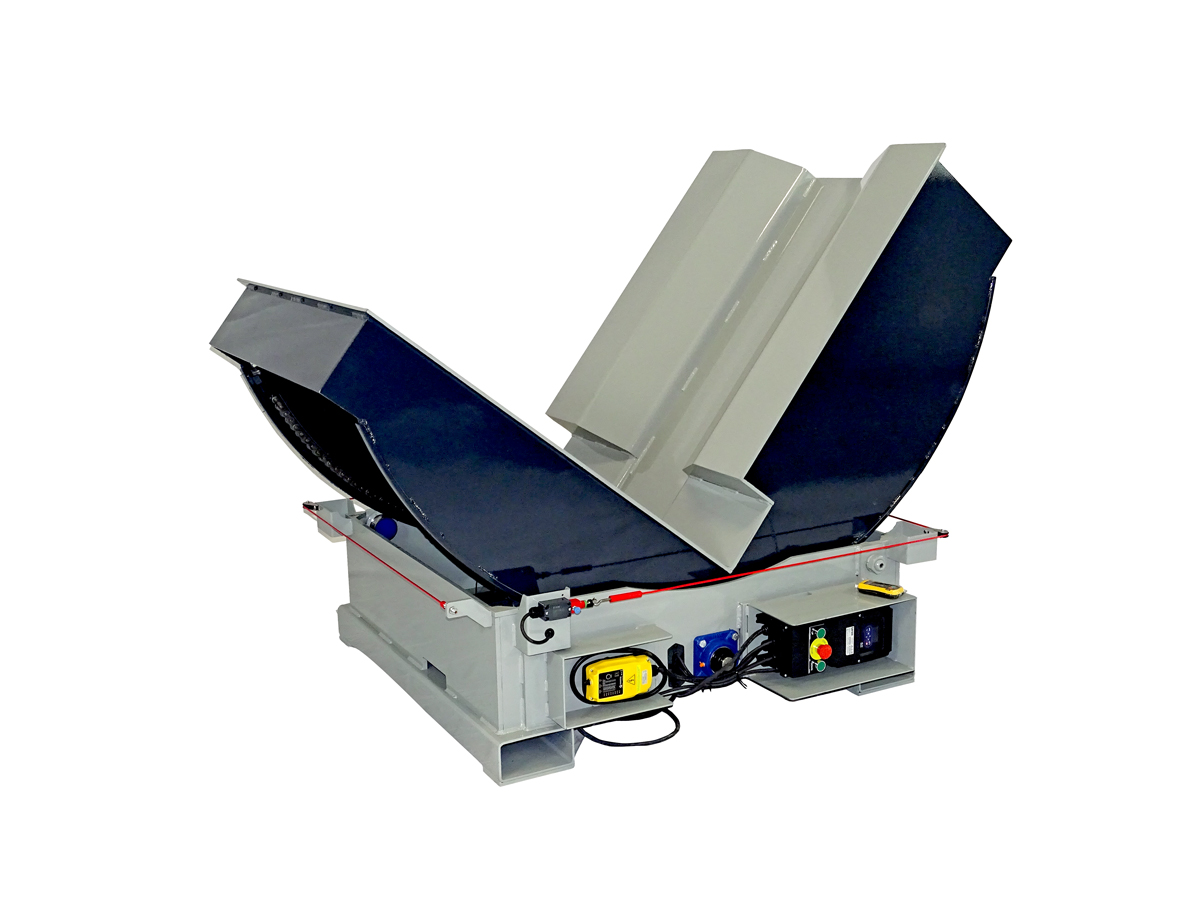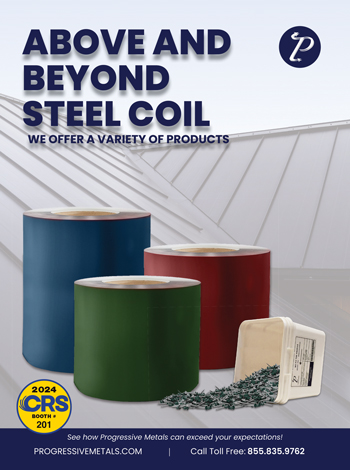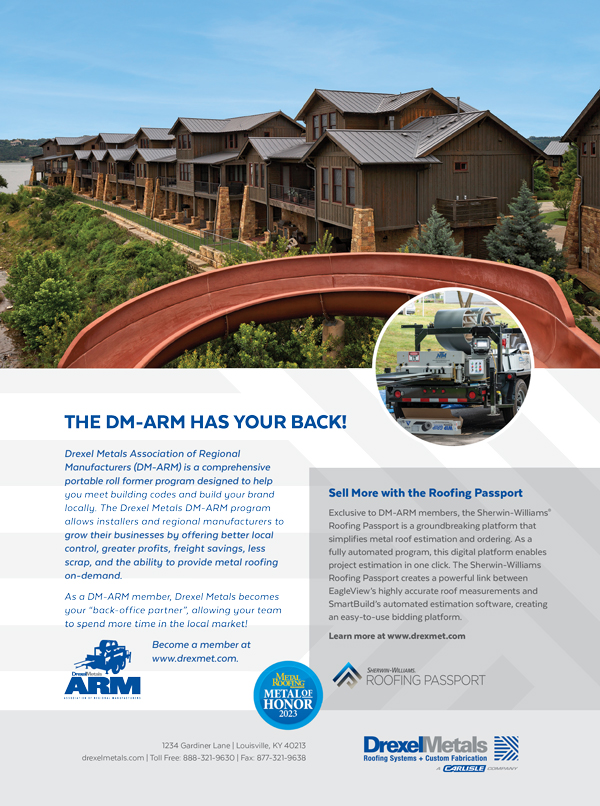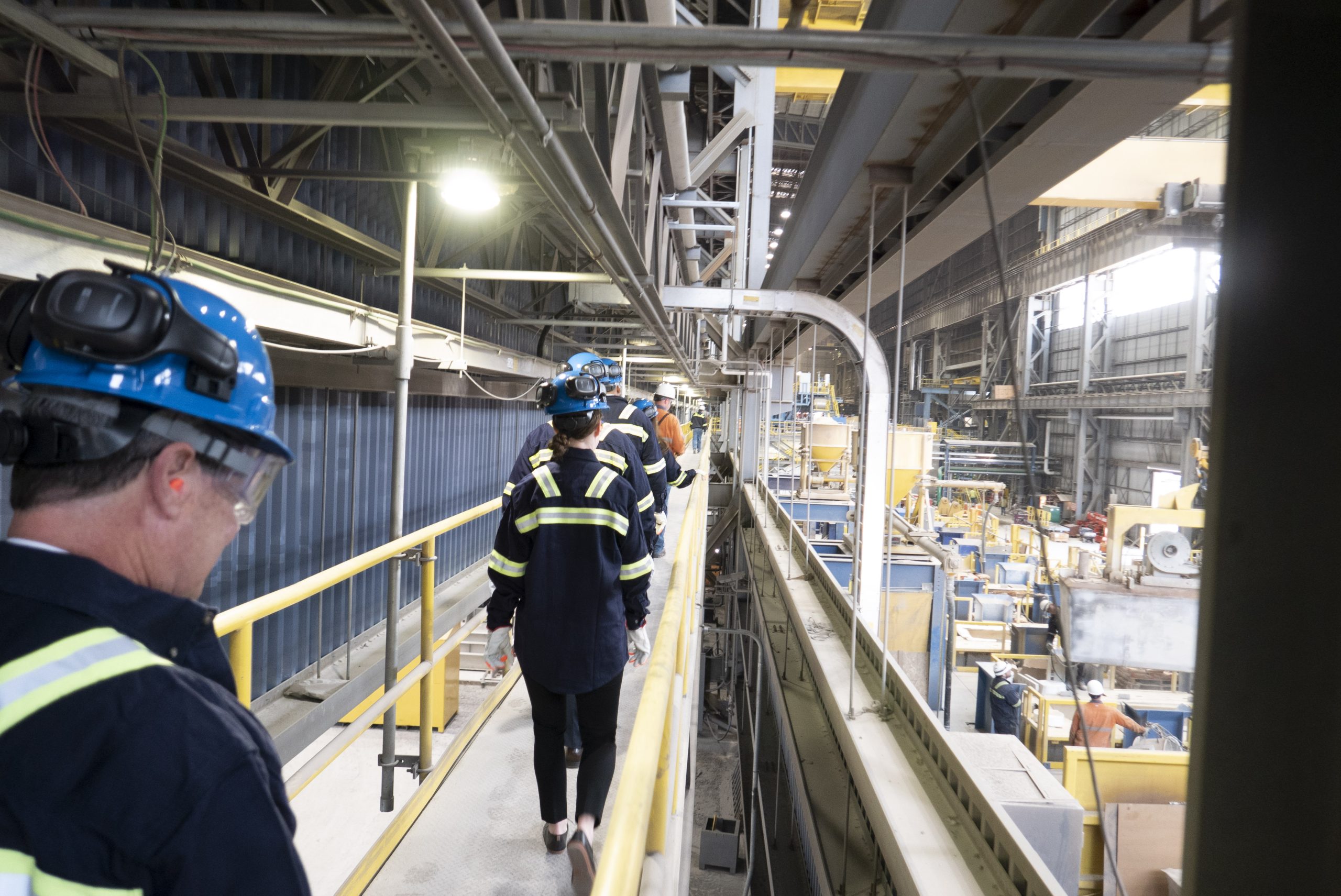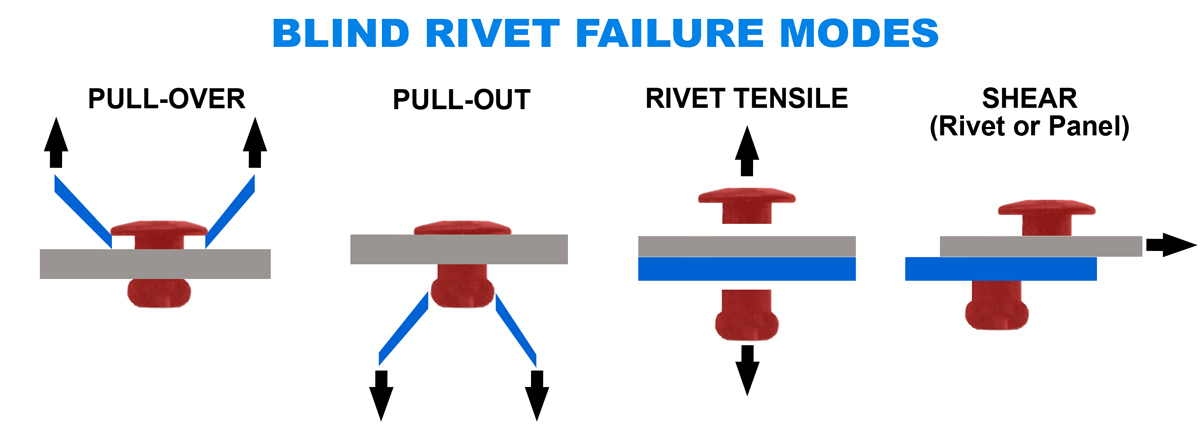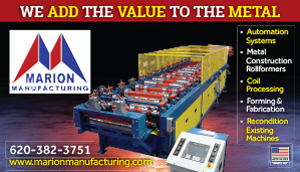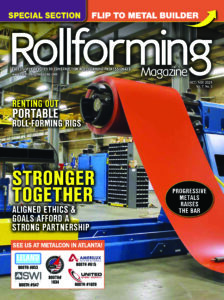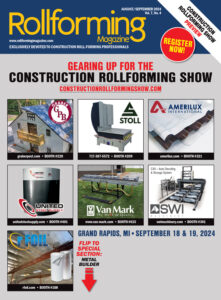Tippers (also called upenders) are the Plain Janes of the roll-forming industry. Simple and uncomplicated, their job is to transition coil for moving. But handling coil can be dangerous, and working with these coils every day can make you forget that you’re lifting, tipping, and rotating 5- to 20-ton rolls of steel, which can do a lot of damage if something goes wrong.
Depending on your coil storage situation, you may have to frequently transition your coils from eye-to-the-sky to eye-to-the-side to begin using them. Even from the delivery truck, the coils will have to be tipped at some point. “Coils get shipped eye-to-the-sky,” said Wayne Troyer of Acu-Form. “If they ship on the side, they will be oval from all the weight compression.”
If done improperly, tipping the coils manually can shift all of the weight to the edge of the coil and cause damages and ultimately product loss. “There are makeshift methods that have been used,” said Solomon Stoll of Stoll Metal Works [Ph: 717-387-5572] “I’ve seen people use a tractor tire as a shock absorber, but it causes edge damage and can be a little dangerous.” The safest method is the use of a tipper.
A tipper works on a pivot, gradually rotating the roll of coil from eye-in-the-sky to eye-to-the-side or the reverse. When tipping eye-to-the-side, the coil is tipped into a V-shaped groove so it can’t roll off the machine. It also helps support the coil’s weight when resting on its rounded side. “The easiest way to rotate a coil is to keep the center of gravity the same,” said Stoll. “You are not raising or lowering the coil, not picking it up, only pivoting, so you use very little power. It’s a very gentle process.” Once the coil is on its side, it can be safely lifted with a C-hook or a chain attached to an overhead crane.
“There’s a lot of weight involved,” said Joel Lesher, also of Stoll Metal Works. “If the coil gets away from you, the results would be interesting.” He noted that buyers should consider what the manufacturer has built into the machine to stop it if something does go wrong, like a piece a metal that accidentally gets thrown into the tipper and blocks its movement. “There’s plenty of stories of things going wrong,” he said.
Another factor for buyers to consider is longevity of the machine. How long is this machine going to last? If it wears prematurely it could be because there’s not enough land area to spread the load.
Some tippers work with bare coil, and some incorporate a storage pallet. “There are some that tip the coil onto a pallet so you can store it right away, but if everything isn’t just right, I have seen the tipper throw the pallet,” said Troyer. When working with any coil handling machine, the operator must remember how much weight and force are involved and be aware of your surroundings. “We have the option where you can buy a remote so you can start it from the forklift and stay out of the danger zone,” said Troyer.
Stoll Metal Works incorporates a safety rope around the entire perimeter of the upender. “With very little movement of that rope the machine will stop and you can reset from there,” Lesher noted.
A very frequently purchased option is a wireless remote with an e-stop.
Though fairly simple machines, one thing to keep in mind is the weight rating of the tipper. Make sure to ask what coil weight your machine can handle and don’t assume it can handle more. Some manufacturers will rate a machine at 12,000 pounds and 12,000 pounds is its absolute max capacity. Others rate a machine at 12,000 pounds when it can really max out its performance at 15,000 or 20,000 pounds. “Think about the situation we have right now,” said Troyer. “Coil isn’t available because of shipping delays. If my machine is maxed out at 10,000 pounds, but the only steel available is a 15,000 pound coil, I’m going to have to cut it down, or not buy it,” said Troyer.
At Stoll Metal Works Lesher said their machines are designed with a 2X structural factor and a 3X factor on the gear train. “While we expect our machines would handle more than the load rating of 10,000 pounds we can’t stand behind it if the customer exceeds the rating,” he said.
By Jenn Milner for Rollforming Magazine


